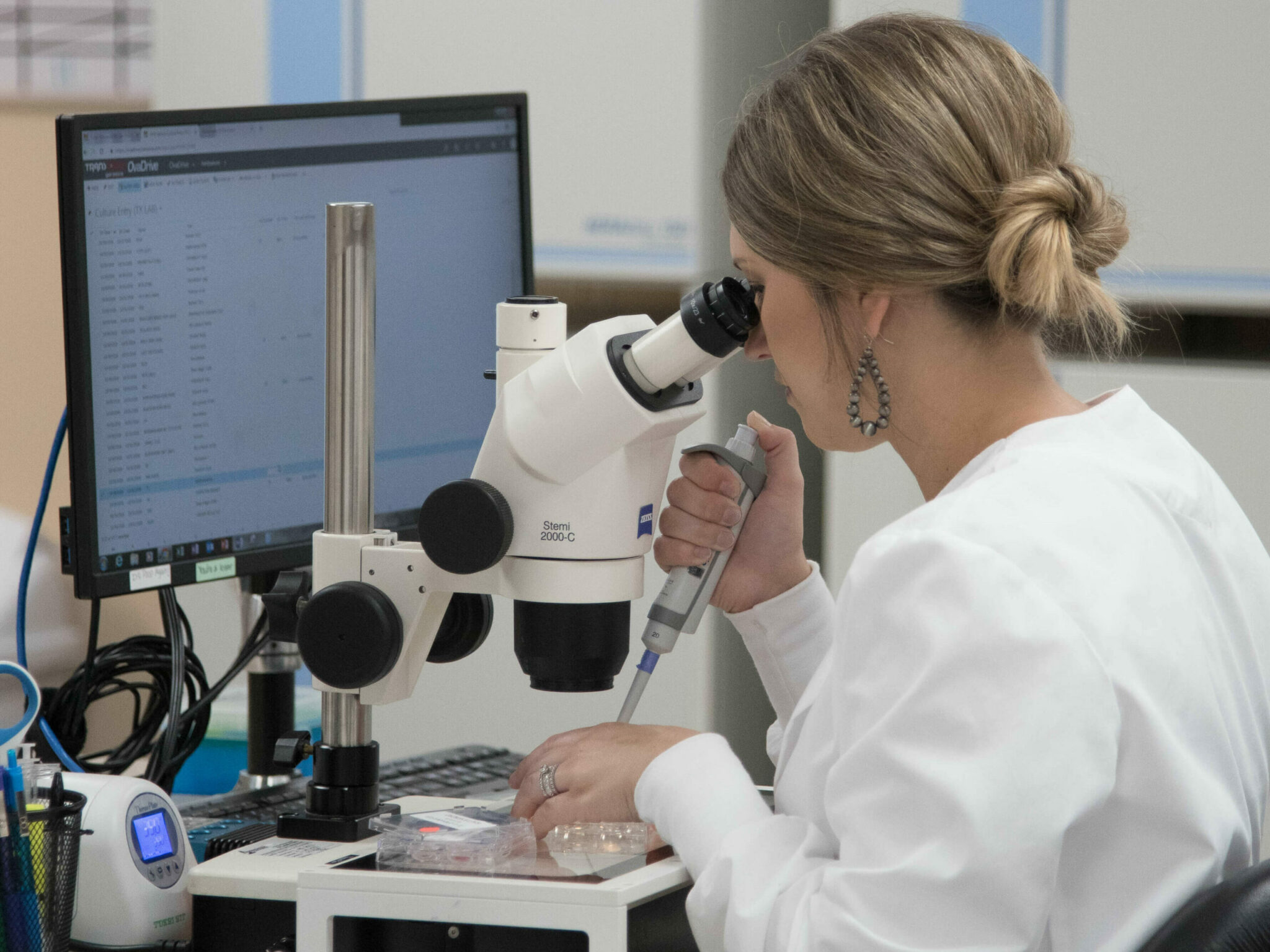May 11, 2022
By: Haley Bickelhaupt
Genetic advancement is a common goal that unites cattle owners throughout the world. While there are numerous options available to enhance your herd, Trans Ova Genetics believes it is important to understand the benefits of all available reproductive technologies, specifically the benefits of IVF.
In vitro fertilization (IVF) is a reproductive tool that has grown in popularity over the last forty years. Its popularity- largely due to the numerous reproductive advantages this procedure presents – allows livestock owners to efficiently maximize their herd’s genetics. Here are a few benefits IVF can bring to your operation.

One of the most popular benefits of utilizing IVF is its ability to produce more calves in a shorter period. Unlike embryo transfer collections which can be performed on a donor female every 28-60 days, females that undergo in vitro fertilization procedures can be aspirated every other week. During a 90-day period, a donor could be aspirated up to 6 times. Within a given time frame, more total pregnancies can be created through an IVF program when compared to embryo transfer technology.
Trans Ova offers a variety of protocols to set up donors for an IVF procedure. However, most animals commonly receive none or little hormonal treatment. The process of aspirating females allows for a simpler, less labor-intensive pre-procedure. This creates an easy pre-period for the producer and can be less stressful for the donor animal.
Another benefit that attracts many livestock owners to the IVF process, is its ability to be performed on pregnant donors. Because the cervix and uterus are not penetrated during the process of aspiration, oocytes can still be collected without disturbing the fetus. The general window for creating embryos from pregnant donors is 40 to 100 days of pregnancy. A sizable percentage of our IVF program is composed of pregnant donors that take advantage of this extended window for creating offspring. This window allows additional time for your maternal rockstar to continue producing cattle that will multiply your herd’s success.
In addition to pregnant donors, IVF procedures can also be performed on young heifers. This flexibility allows for you to begin producing an animal’s genetic line at an earlier age. While we would prefer to wait until at least 10 months of age before collecting oocytes from a donor, work can be scheduled earlier at the owner’s request, and if the donor is physically mature enough to do so. Clients must be aware of the fact that results are much more variable with very young heifers, and production will often not meet our overall system averages.
With IVF, less semen is needed than in a typical AI or ET procedure because oocytes are contained in small dishes during the fertilization period. This allows for tremendous opportunities. Depending on quality, one straw of conventional semen can fertilize oocytes from as many as 15 donors. This allows breeders to maximize the effectiveness of rare or expensive semen.
If sex-selected pregnancies are desired the IVF system offers distinct advantages over conventional ET. Quality sexed frozen semen tends to be more effective in IVF because fewer sperm cells are necessary. Generally, 1-2 straws are sufficient per donor, depending on how many oocytes she has produced.
Want to learn more about the details of IVF and how it can be utilized in your herd? Call us at 800-999-3586 and let us multiple success within your operation!